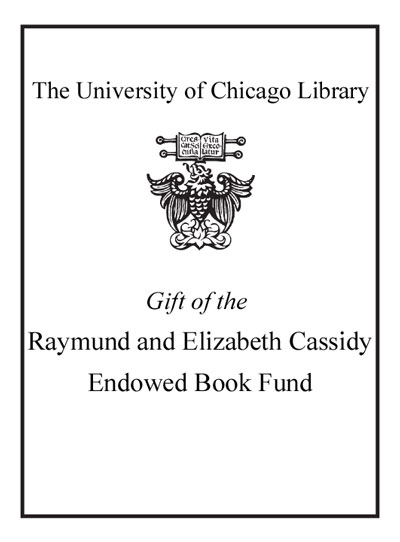Topography of politics in rural China : the story of Xiaocun /
Saved in:
| Author / Creator: | Zhu, Xiaoyang, author. |
|---|---|
| Imprint: | Singapore ; Hackensack, NJ : World Scientific, [2015] |
| Description: | ix, 278 pages ; 24 cm. |
| Language: | English |
| Series: | Peking University series on sociology and anthropology, 2335-657x ; Vol. 3 Peking University series on sociology and anthropology ; v. 3. |
| Subject: | |
| Format: | Print Book |
| URL for this record: | http://pi.lib.uchicago.edu/1001/cat/bib/10116606 |
Table of Contents:
- Editorial Committee
- 1. Introduction: "Topography" Beyond Topography
- 1.1. Topography and Radical Interpretation
- 1.2. The "Radical Interpretation" of Peasant-State Relations
- 1.3. Radical Interpretation and Social Theory
- 1.4. Radical Interpretation and Local Knowledge Dominant and Recessive
- 1.5. Radical Interpretation and the Dwelling Approach
- 1.6. Chronicling Culture and Radical Interpretation
- 2. Water
- 2.1. Introduction
- 2.2. Water and the East Coast of Dianchi
- 2.3. Water Dispute and Water Division: The People and the Government
- 2.4. The Legend of Water Division and "Living Drama"
- 2.5. The Chant of Hydraulics: From the Republic Era to the Peak of Socialism
- 2.6. From Water Diversion to Water Extraction: The Transformation of the Knowledge Types
- 2.7. "Water Management", "Heavenly Help" and the Leaders of the Village
- 3. Land
- 3.1. Introduction
- 3.2. Land and "Black Land"
- 3.3. "Sick Laud"
- 3.4. Lost Land - the Freeway and the Dissolution of the Traditional Way of Life
- 3.5. Lost Land - the "Great Kunming Plan" and the Loss of Farmland
- 3.6. Farmers. "Officials" ($$$) and the State
- 3.7. Conclusion
- 4. Dwelling
- 4.1. Water Surrounding the Village, Li Social Order, and Paradigmatic Housing: From Commune to New Village
- 4.2. Three Rooms and Four Wings - Heterotopia and Big Families in the Equalitarian Era
- 4.3. Egalitarianism and the Complementary Differential Order - Managing the Land but not the Sky
- 4.4. "Compensation Expectations" and Peasant Rationality
- 4.5. From the New Village to Urban Village: The Variation in Local Politics
- 4.6. "Protecting our Ideal Home" (March 2012, Supplementary Notes)
- 4.7. The "Stone Cat" in the Ideal Home
- 4.8. "Opening Ceremony"
- Appendix
- The Spatial Changes in Front of the Big Temple and Community
- 5. Conclusion
- 5.1. Peasants and the State - Through the Lens of Political Economy
- 5.2. "Extinction" and Struggle in Everyday Life - Transcending the Political Economy Vision
- 6. An Afterword: "Extended-Case" and Rural Order
- 6.1. Starting from "Extended-Case Methods"
- 6.2. The Extended-Case Method and Its History
- 6.2.1. What is the Extended-Case Method?
- 6.2.2. How to Use the Extended-Case Method
- 6.3. Problems at the Practical Level Faced in this Chapter
- 6.4. A Prehistory of a Village "Legend" Before Becoming the Case; The "Settling" of Conflict; and The Extension of the Case
- 6.4.1. Case
- 6.4.2. Background and Legend: The Prehistory of the Case (1931-1940)
- 6.4.3. Coses and Their "Settling" (The Interpretation of Village History in 1975: Another Turning Point in the Village History)
- 6.4.4. The "Social Consequence" of the Case: 1950-1970
- 6.4.5. The "Social Consequences" of the Far Extension of a Case: A Family's Life Course and the Reconstruction of a Community (1990-2002)
- 6.5. Concluding Commentary
- 6.5.1. What is the Meaning Behind Discussing One Case?
- Bibliographies
- Chinese References
- English References
- Historical Materials
- Other Materials
- Index

